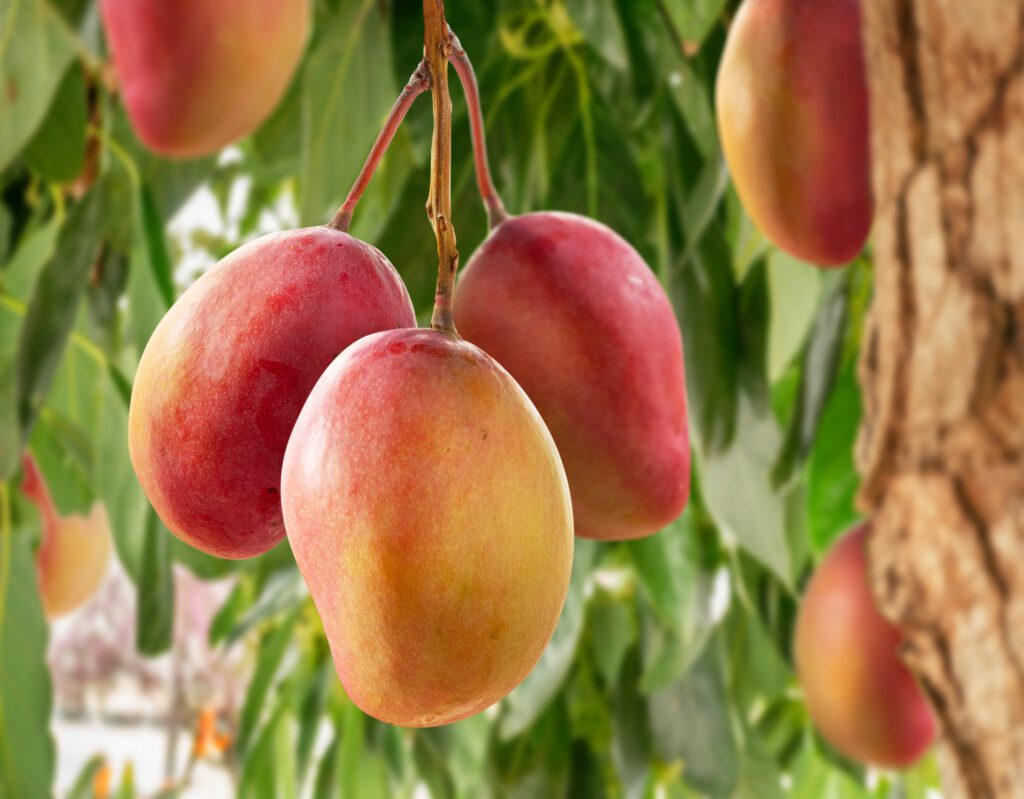Mangoes Thrive in South Florida’s Tropical Climate
by TERESA SCHIFFER
Sponsored by Farm Credit of Central Florida
Mangoes are originally from India and Southeast Asia, but South Florida’s tropical climate is perfect for the stone fruit. In fact, Florida leads the nation in mango production.
Florida’s Mango History
Although mango (Mangifera indica) is considered to be a type of fruit called a “drupe” and a stone fruit, it is more closely related to cashews pistachios, which are also in the Mangifera genus, as opposed to the typical stone fruits, like cherries and peaches, of the Prunus genus.
The fleshy fruit made its way to North America in the 1600s when Spanish explorers introduced the mango to Mexico. In the 1800s, mangoes were starting to be seen in Florida. Pirates carried mangoes with them as they sailed about South Florida, and the large seeds that were discarded established a mango presence in Key West. In 1833, the first commercial grove of mangoes was planted by Dr. Henry Perrine in Cape Sable, though the trees died from neglect after Perrine passed.
Mangoes finally took root in the Florida agricultural landscape in 1889, when botanist David Fairchild, the founder of the USDA’s Section of Foreign Seed and Plant Introduction, successfully transported grafted seedlings of the Mulgoba variety of mango from Bombay, India, to Florida. Fairchild traveled the world in search of edible plants that he could introduce to the U.S. and is responsible for a number of the common fruits and vegetables we now see in our grocery produce aisles.
When Fairchild brought mangoes to the U.S., the USDA was motivated to establish a significant mango industry in Florida. The department invested in planting trees and initiating research programs at the University of Florida and the University of Miami. The industry never really blossomed in Florida, though, due to such issues as poor marketing, fruit quality, and foreign competition.
Mangoes Today in Florida
Mangoes only grow in tropical environments, so their range in the U.S. is limited to Florida, California, Hawaii, and Puerto Rico. Since the mango trees cannot tolerate temperatures below 40 or 30 degrees Fahrenheit, depending on their maturity, South Florida is really the only part of the state where you’ll find commercial production of this sun-loving fruit. Summer is peak mango season in Florida, with harvests taking place from May through October. One mature tree can yield from 220 to 330 pounds of fruit.
Currently, the varieties of mango most commonly grown in Florida include Haden, Carrie, Glenn, and Valencia Pride. Production has been slowly but steadily increasing here in recent years, but consumer demand has been consistently outpacing what’s available domestically. Executive director of the National Mango Board Manuel Michel estimates that Americans consume an average of 3.66 pounds of mango per person annually.
A typical mango orchard has a planting density of 80 trees per acre. Trees are mature in five years, and the average marketable yield of a mature orchard is about 18,700 pounds per acre per year. At $0.41 per pound as the packinghouse price, the total gross revenue for an acre is about $7,667 per acre per year. After subtracting the variable costs and the fixed cost of cultivating and producing the fruit, the net return (as of 2022, according to UF/IFAS) is about $0.24 per pound, or $4,487 per acre per year.

